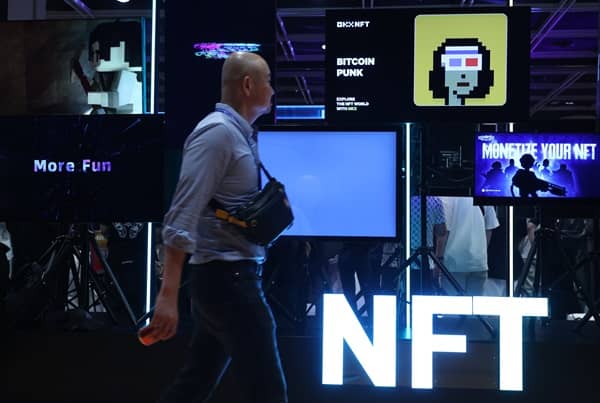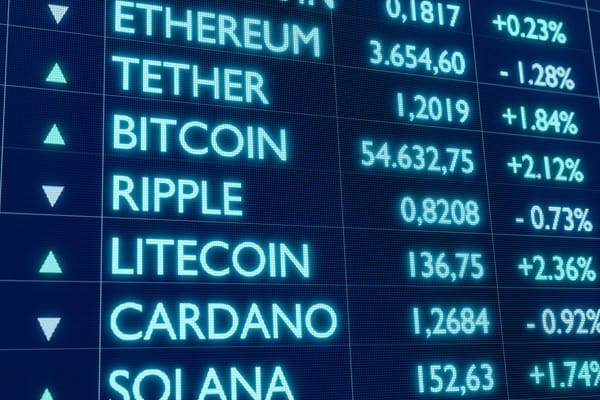Bussiness
10 best solutions to ensuring transaction speed and security for NFTs – London Business News | Londonlovesbusiness.com

The significant growth of NFT has created many opportunities to develop ownership and value in the digital world, so the speed and security of transactions have become important challenges for NFT.
With millions of users creating, buying, and selling NFTs daily, the demand for transactions is high. However, low transaction speed can reduce users’ trust, and security problems can cause capital loss.
The role of advanced blockchain technologies, the use of the best security methods, and the importance of Cloud infrastructure in the speed and security of NFT transactions is undeniable.
NFT investors and developers need to conduct their transactions in a secure and efficient environment. Therefore, using solutions to optimize the transaction speed and security for NFTs is a critical issue to address these issues.
Definition of the NFT concept and how to conduct transactions
A non-fungible token (NFT) is a unique digital asset and can be in the form of artwork, music, in-game items, videos, etc.
NFT is based on blockchain technology and must be registered in a blockchain to verify the ownership and authenticity of digital assets.
NFTs, unlike other digital currencies, are non-fungible and cannot be exchanged for another NFT.
Due to the importance of the speed of NFT transactions, blockchain platforms such as Ethereum, Solana, and Flow are more popular. The transaction process consists of different steps that mostly take place in a few steps.
First, an NFT is minted (created) on the blockchain through a smart contract. Consumers will need to own a working cryptocurrency wallet (MetaMask, Coinbase Wallet, etc.) and sufficient amounts of the required cryptocurrency to buy the item and also pay the ‘gas fees’ which are the normal transaction fees. As soon as the transaction starts, the particulars of the buyer’s offer are captured in the blockchain. Once approved, the NFT ownership is passed on to the buyer, and this process is permanently captured in the blockchain.
The role of cloud Infrastructure in NFT transaction and market growth
Cloud infrastructure is one of the essential components of the NFT market to support the scalability, speed, and security of NFT transactions. With the massive growth of NFT platforms, Cloud infrastructure provides the critical support needed to ensure the speed and security of transactions.
The scalability and flexibility of the Cloud infrastructure ensure handling the demand of millions of users for NFT transactions.
Providers like OperaVPS offer Cloud servers with scalable resources and allow NFT platforms to handle sudden spikes in user activity or transaction volume. For more information about cloud service plans, you can visit https://operavps.com/vps-server/ website.
One of the biggest concerns in the NFT space is the security of transactions and assets. Cloud server providers use encryption protocols, multi-layer security, and other security measures to protect NFT transactions from cyber threats, which are invaluable for protecting digital assets.
Cloud servers offer reduced latency to NFT platforms that are sensitive to transaction time. The use of global data centers ensures faster validation processing on the blockchain and lag-free interactions, improving the user experience.
The importance of transaction speed in NFT markets
In the volatile market of digital currencies, the speed of transactions is one of the main factors in the NFT market. Fast transactions allow buyers and sellers to play a significant role in NFT trading, especially during periods of high demand.
In the NFT market, prices are changing rapidly, and delayed transactions result in lost opportunities and ownership of assets. Also, slower transactions cause more gas fees on crowded blockchain networks like Ethereum and increase user transaction costs.
Transaction speed can affect the overall performance of the platform. NFT platforms are ready to accept millions of users and slow processing time can hurt user interaction and trust. Using high-speed blockchain networks, integrating layer 2 solutions, or other methods we’ll discuss below, NFT platforms can provide the smooth, low-latency transactions necessary to keep up with the growing demand in the digital asset market and ensure transaction speed and security for NFT.
Ensuring safety and security in the NFT world
Due to the increasing popularity of digital assets, security has become more important in NFT to prevent threats such as hacking, phishing, and fraud. Private keys are cryptographic keys that provide access to users’ NFT wallets, and protecting these private keys is one of the most important aspects of NFT security.
So, NFT owners must store their private keys securely so that malicious agents cannot gain control over their digital assets. One safe way is to use hardware wallets that are offline and less vulnerable to hacking attempts.
Additionally, attackers can steal login information or private keys by impersonating NFT markets. Users should keep their personal information secret and avoid signing suspicious contracts. Also, the use of strong security protocols such as multi-signature wallets and two-factor authentication (2FA) adds a layer of protection to NFT platforms.
Ultimately, the transparent and immutable nature of blockchain acts as a safeguard, but users should be aware of security practices to prevent unauthorized transactions.
In the following, we will examine solutions to ensure transaction speed and security for NFTs.
10 best tips to speed up and secure NFT transaction
The significant growth of NFTs has caused important challenges in the speed and security of NFT transactions. While the blockchain network provides the basic foundation for NFT security, knowing the best solutions for fast and secure transactions will help improve the speed and security of NFT transactions.
1. Choosing the right blockchain for speed
NFT holders can ensure the speed of transactions by choosing the right blockchain. Different blockchains offer different speeds and scalability.
Blockchains like Solana and Flow are suitable for faster transactions. Solana, with its robust mechanism, is suitable for NFT platforms with heavy traffic and can process thousands of transactions per second. Also, Flow is designed for NFTs and focuses on fast, secure, and user-friendly transactions.
In addition, other blockchain networks such as Polygon, EOS, Binance Smart Chain (BSC), etc. are the right choice to increase the speed of NFT transactions.
2. Layer 2 scaling solutions
Layer 2 scaling solutions are one of the most effective ways to improve the speed of NFT transactions on the blockchain. This method reduces workload and congestion by transferring a large part of transaction processing outside the main blockchain (Layer 1) and onto secondary layers (Layer 2), increasing the speed and security of transactions.
This approach allows processing multiple transactions into a single transaction, allowing NFTs to be transferred, minted, or sold more quickly and reducing gas fees.
Technologies such as sidechains, rollups, and state channels are popular Layer 2 solutions that can ensure NFT transaction speed, security, and cost-effectiveness.
3. Optimizing smart contracts for security
Smart contracts are the building blocks of NFT-related operations, allowing users to create, purchase, and trade digital assets or NFTs. The optimization of smart contracts is essential for security and efficiency. Such general measures consist of outsourcing audits to security companies to find weaknesses as well as reduce gas fees.
For instance, companies such as CertiK and OpenZeppelin provide essential, well-nurtured auditing services that ensure smart contracts are not defective to slow payments or more vulnerabilities.
4. Implementing multi-signature wallets
Multi-signature wallets offer some level of security to those managing a wide range of NFTs or operational NFT marketplaces.
A multi-signature wallet comprises two or more private keys to complete any transaction, thus reducing the chances for any malicious activity to be committed. By distributing access across several keys, it becomes increasingly challenging for hackers to steal the NFTs or modify the smart contracts.
5. Leveraging Two-Factor Authentication (2FA)
Using 2FA is a safe way to access NFT platforms and digital wallets. 2FA adds an extra layer of security beyond a password, protecting access to digital assets even if login credentials are compromised.
Authentication systems such as Google Authenticator provide security for NFT transactions.
6. Employing AI-powered fraud detection
AI-powered systems analyze NFT transaction patterns to prevent fraudulent transactions. AI algorithms can detect suspicious behavior such as repeated failed login attempts or transactions at unusual locations in one day to significantly increase the security of NFT transactions.
7. Decentralized Exchanges (DEXs)
Decentralized exchanges provide peer-to-peer trading of NFTs without the need for intermediaries, which increases the speed and security of transactions. DEXs help protect privacy to prevent fraud in transactions. DEX runs on blockchain technology to ensure data integrity and reduce processing time.
8. Fractional ownership
Fractional ownership of NFTs means investors can own a share of a particular NFT. This would add more liquidity to the market, making the trade of digital assets faster than ever. Such a solution makes more users enter the NFT market, ensuring quicker and smoother deals.
9. Zero-knowledge rollups (ZK-Rollups)
Zero-knowledge rollups (ZK-Rollups) is a sophisticated cryptographic method that can roll up multiple transactions into a single transaction and also maintain the security of each transaction.
In this way, the amount of data that is processed in the blockchain is reduced and the speed of transactions is increased without compromising security.
10. Sharding
Sharding is one of the most practical ways to improve NFT transaction speed and security. This method divides the blockchain network into smaller parallel-working segments called shards, enhancing blockchain scalability and making managing these pieces easier.
Each shard as an independent blockchain can process transactions and later merge into the main blockchain. In this method, transactions are processed simultaneously, which significantly increases the speed and throughput of transactions.
Sharding also increases security by isolating potential issues into individual shards, preventing attacks on the entire network.
Conclusion
The NFT world is evolving rapidly, and the speed and security of transactions have become an important challenge for NFT owners.
The integration of advanced technologies such as choosing the right blockchain, layer 2 scaling solutions, sharding, and other security practices ensures that users enjoy fast, secure, and reliable NFT transactions.
As the NFT space continues to grow, the use of cloud infrastructure will provide better solutions for demand management in the NFT market.
The above information does not constitute any form of advice or recommendation by London Loves Business and is not intended to be relied upon by users in making (or refraining from making) any finance decisions. Appropriate independent advice should be obtained before making any such decision. London Loves Business bears no responsibility for any gains or losses.








